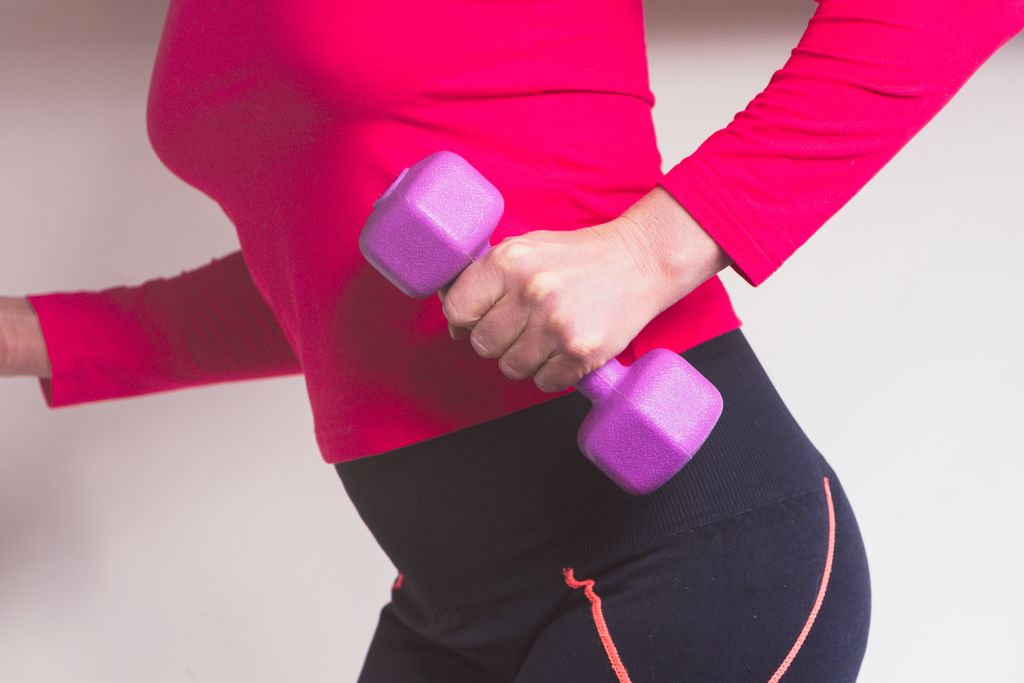Most of us know that we lose bone as we age—it's called osteopenia, and if we don't do anything about it, it leads to osteoporosis, a condition of weak and fragile bones that are susceptible to breakage when we fall.
Fewer of us know that our muscles also lose strength and mass as we age, a normal process known as sarcopenia.
Muscle loss as we age
Sarcopenia happens to everyone, even active athletes. This gradual loss of skeletal muscle generally begins sometime in our thirties (surprise!) and hits the accelerator by the time we get to our mid-sixties.
With the passage of time, muscle cells work less effectively; we have fewer and shorter fibers that are less able to process energy, and there's a corresponding decline in the mitochondria that power them, the motor neurons that control them and the hormones that regulate muscle growth and atrophy.
Much like osteopenia, sarcopenia happens much faster if you don't move a lot.
The age-related loss of muscle is a major cause of frailty, increasing the risk of falling and fractures in older people. Falls are the second-leading cause of unintentional death worldwide, and muscle weakness is a major risk factor.
Maintaining strong muscles
Maintaining strong muscles, of course, is important for everyday agility and activity, but they're also critical for regulating metabolism and other physiological processes in a healthy body.
That's because skeletal muscle isn't just for helping you get around—it's also an endocrine tissue, which means that it releases signaling molecules, called myokines, which travel to other parts of your body, including the brain, to tell them to do things.
The importance of muscles
Myokines are released into the bloodstream when your muscles contract, activate muscle stem cells for repair, or perform other metabolic activities.
When they arrive at the brain, they regulate physiological and metabolic responses there, too. As a result, myokines have the ability to affect cognition, mood and emotional behavior.
Exercise for memory support
When you exercise, myokines stimulate beneficial responses in the brain, including the formation of new neurons and boosting learning and memory. And healthy skeletal muscle influences heart muscle, too - new research shows that women who do weight training just a couple of days a week reduce their risk of death from heart disease by a whopping 30 percent.
Strength training is the single most important thing you can do to slow or even reverse the normal muscular decline of aging. But people don't always receive this prescription for a daily dose of iron — pumping iron, that is — from their doctor, or take it seriously enough.
Testing mortality
Something as simple as a 10-second balance test on one leg is a powerful indicator of mortality risk. Or the sit-to-stand test, in which you see how many times you can stand up and sit down in a chair in one minute, without using your hands.
It's another way of testing balance through the strength of muscles in your legs, glutes, feet, and core. The stronger they are, the better your balance.
Muscles get older, but they can still be reminded to do what they did in their youth. They can be rejuvenated in the most surprising of ways. Even exercisers who don't start until late in life can gain remarkable mass and strength.
How to restore strength and muscle in your 40s, 50s, 60s, and beyond
1. Ease into it
Start with a lesson in beginners' lifting, either from a trusted friend who knows what they're doing or with a professional trainer at the gym.
Most gyms offer a free session or two with a personal trainer who can talk through your goals and give a basic introduction to weight training.
Once you feel comfortable and confident with your form so that you won't hurt yourself, you can start working out on your own.
2. Build muscle with a buddy
Independence is key, but working out is always more fun with a friend! Working out with a pal also means you have social reinforcement for every training session, as well as extra motivation with each meet-up—you’re holding each other accountable.
3. Lift heavy
To increase your muscle strength, you need to challenge your muscles. Generally speaking, this means that you can only manage eight to 10 repetitions while maintaining good form. (If you think about it, the silver lining to this is that you don't have to spend your entire day at the gym.) When a particular weight gets easier, you can move up to the next one.
3. Remember it's a process
One of the most amazing things about muscle is that it is one of the most adaptable tissues in the human body. And that, like muscle, you are capable of change.
















